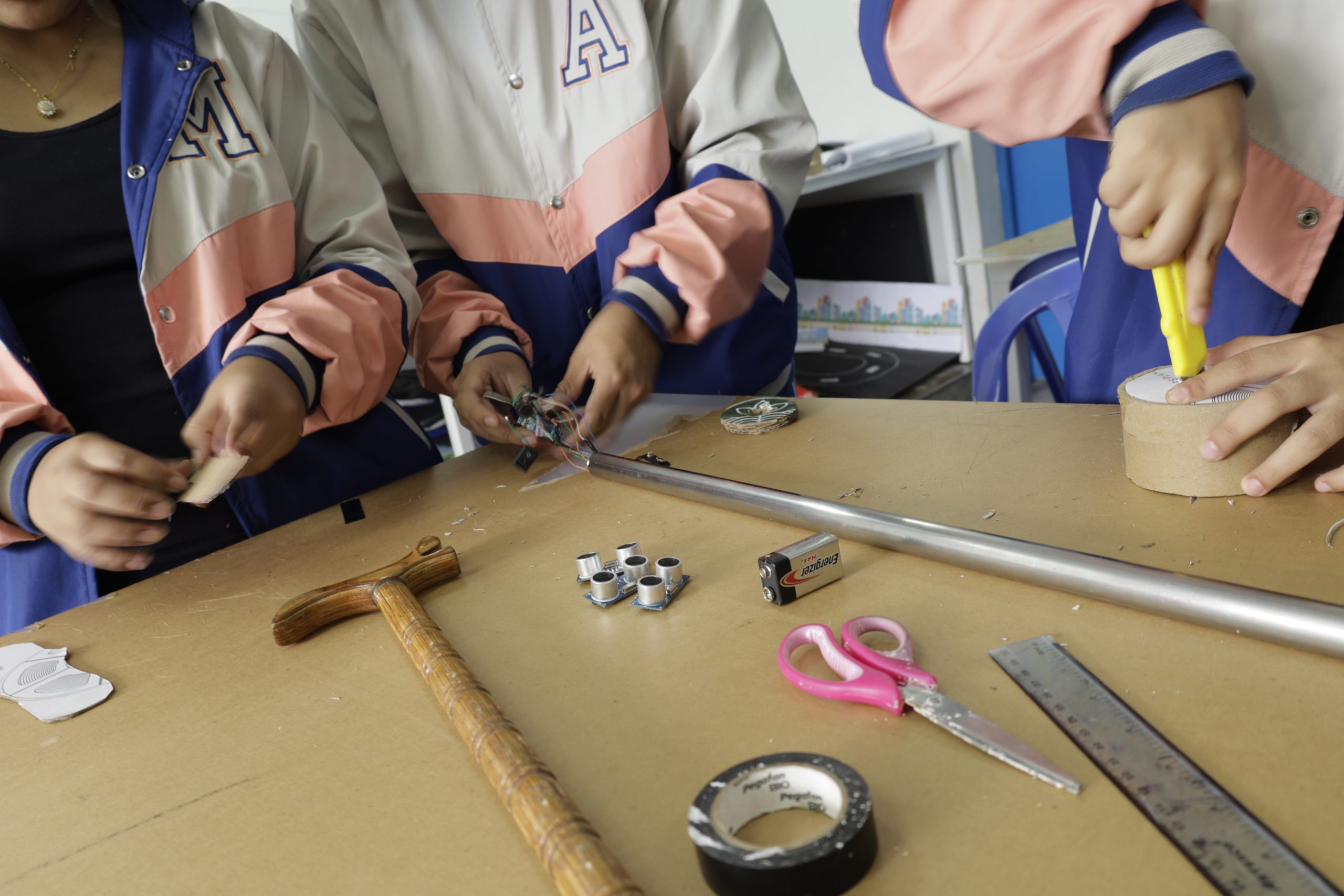Promoting the inclusion of people with disabilities goes beyond adding the topic to the school curriculum. It’s a process that involves listening, empathy, creativity, and collaboration. Whether in rural or urban areas, anywhere in the world, school communities can help identify real-life challenges and to develop innovative solutions — for classmates with disabilities as well as for others facing similar difficulties.
Encouraging inclusive education means building a school environment that respects differences and provides appropriate support so that each student can grow according to their own pace and potential. One effective way to foster this mindset is through Project-Based Learning, especially when combined with a STEM approach (Science, Technology, Engineering, and Math). With these methodologies, students take the lead while the teacher encourages the development of soft skills in the classroom, such as teamwork and critical thinking.
When students are challenged to real problem solving, they develop a sense of purpose that goes beyond grades or exams. To achieve this, educators can begin by prompting the class to think: do you know someone with a disability? What barriers do they face? What needs exist in your community that could be transformed to improve their daily lives? Then, guide the students through a brainstorming session to come up with accessible solutions using tools and methods that connect with their own realities.
Below are five projects where student teams identified local challenges and created real solutions to reduce barriers for people with limited mobility or various types of disabilities, whether auditory, cognitive, visual, or physical.
1. Innovation can be a low-cost technology
Solutions don’t always have to start from scratch. Students can develop more sustainable and affordable alternatives to products already on the market, helping improve access for people with disabilities. That was the case with “Neolimb”, a project from Paraguay that became a finalist in the 2023 Solve for Tomorrow.
The team created a 3D-printed prosthetic hand. The prototype cost ten times less than the most accessible alternatives in the country. The project also stood out because it aimed to use an open-source model, allowing anyone to inspect, modify, and improve it.
2. Use technology to overcome inclusion challenges in cities
After observing gaps in urban accessibility in Bucaramanga, Colombia — including the challenges faced by people with visual impairments — a group of teenagers created “Eye Buzzer”, one of the standout projects in the 2023 Solve for Tomorrow.
The team identified a lack of proper tactile signage, uneven sidewalks, and missing assistive devices in the city. So they developed a cap equipped with ultrasonic sensors to detect obstacles in the user’s path. When an object is detected ahead, the device activates an audio alert, allowing the person to safely adjust their route. The prototype is lightweight, portable, and user-friendly — designed as an affordable alternative to more expensive and complex technologies.
3. Look inside the school
Sometimes, you don’t need to look far to find a potential audience for a STEM project. In “Seekers of Silence”, students from Chile discovered that excessive noise in classrooms and common areas affected the well-being and learning of students with Autism Spectrum Disorder (ASD). So they created a device to monitor noise pollution.
The prototype uses LED lights, functioning like a traffic light to display decibel levels (the unit used to measure sound intensity). When the light turns red, it means the 40-decibel limit has been exceeded. The app then notifies responsible adults so they can take action and return sound levels to the appropriate range for that class. The device also supports students with attention deficits and others sensitive to noise, and it was a winning project in Chile’s 2023 Solve for Tomorrow.
4. The answer can come on a smaller scale
Bigger isn’t always better. Small-scale, customizable solutions can make a big difference. That’s what happened with “Innova”, a 2023 Solve for Tomorrow finalist in Argentina. Concerned about the lack of adequate resources for students with visual impairments, four girls developed a practical, affordable, and customizable tool: a 3D-printed Braille keyboard that can be adjusted to each user’s specific needs.
The inclusion project stood out for its flexible design: the students created a modular keyboard that can be adapted in size, spacing, and functionality based on the user’s age or familiarity with Braille. This flexibility makes the tool more inclusive and useful in a variety of educational settings.
5. Personal experiences can spark social inclusion
Listening attentively and valuing students’ lived experiences can be the starting point for developing a socially impactful tool. That was the case with “JENNI”, a finalist in Mexico’s 2024 Solve for Tomorrow.
Inspired by one of the team members who uses a prosthetic limb, the project launched a platform that offers guidance on using and maintaining prosthetics. The app works like a game in which users level up as they progress in their rehabilitation — helping them stay motivated and committed to their recovery journey.




